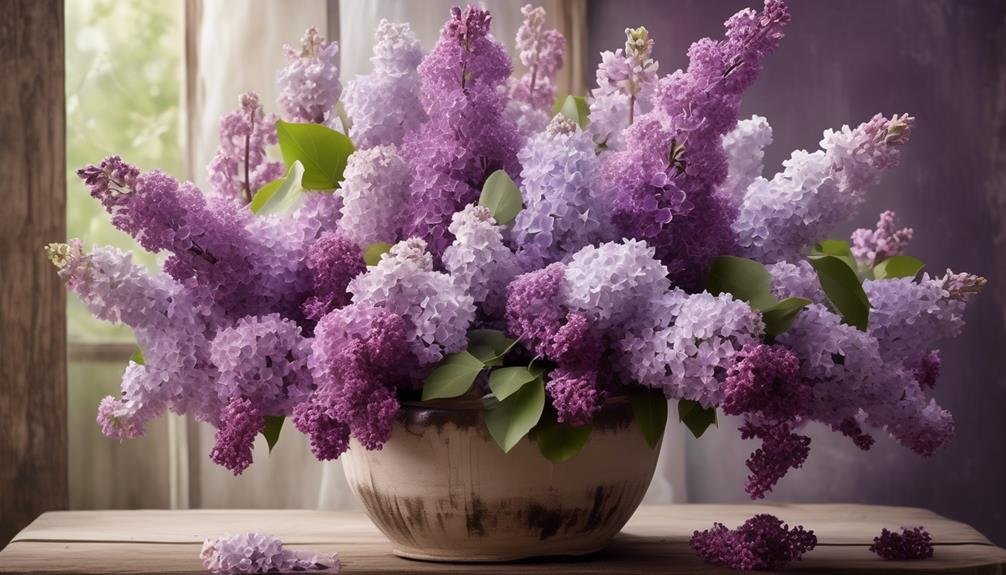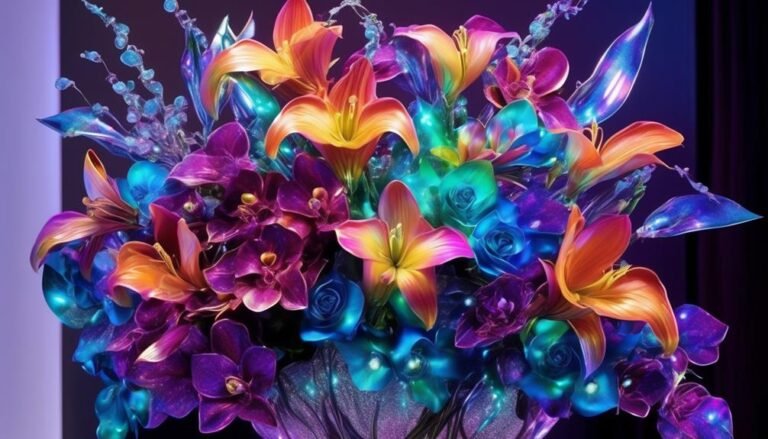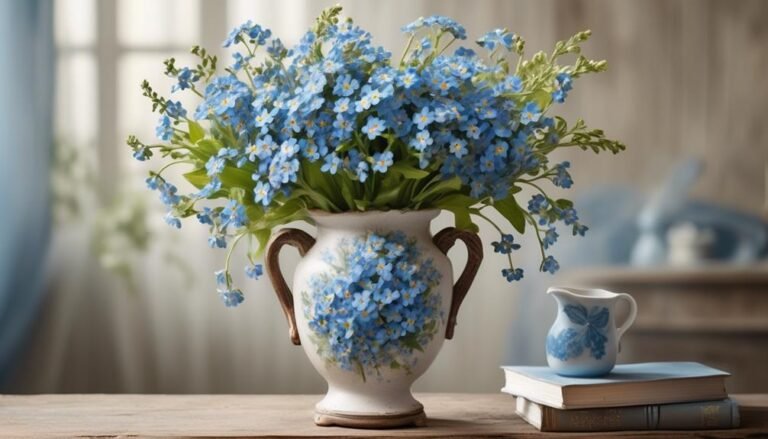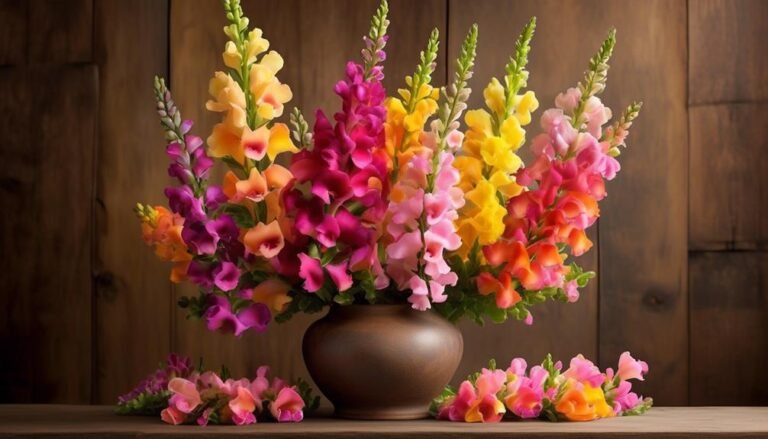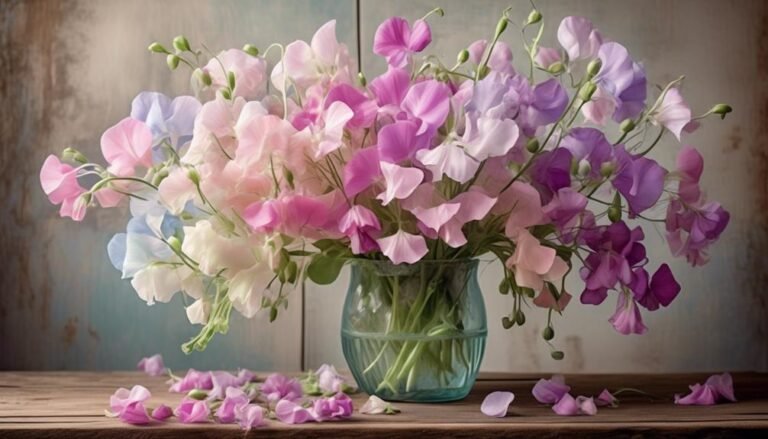Popular Types of Florist Flowers – Lilac
Lilacs, also known as Syringa vulgaris, are a top choice for florists, representing over 20% of all cut flowers sold in the US. These delicate blooms have a rich history and symbolism, making them a popular choice for floral arrangements. Let's explore the seasonal availability, colors, and varieties of these captivating flowers.
Seasonal Availability
Lilacs are typically in season during the spring, from late April to early June. This is the best time to find them in full bloom, showcasing their fragrant and colorful flowers.
Colors and Varieties
Lilacs come in a diverse range of colors, including shades of purple, pink, white, and even blue. There are also different varieties of lilac flowers, each with its own unique characteristics and fragrance, such as the common lilac, Persian lilac, and the dwarf Korean lilac.
Symbolism and Significance
Lilacs are often associated with the emotions of love, passion, and remembrance. They are commonly used in weddings, anniversaries, and other special occasions to convey heartfelt sentiments.
Care and Handling
When incorporating lilacs into floral arrangements, it's important to trim the stems at an angle and place them in clean water to maximize their vase life. Additionally, removing any leaves below the waterline and keeping them in a cool environment can help prolong their freshness.
Incorporating Lilacs into Floral Designs
Lilacs can be used in various floral designs, from bouquets to centerpieces, adding a touch of elegance and charm to any arrangement. Their fragrant blooms and vibrant colors make them a versatile choice for different styles and themes.
In conclusion, lilac flowers are not only visually stunning but also hold deep symbolism and significance. Understanding their seasonal availability, colors, varieties, care tips, and design possibilities can enhance the appreciation for these beloved blooms in the world of floristry.
Scientific Name
The lilac, scientifically known as Syringa and belonging to the Oleaceae family, is native to Southeast Asia and Southern Europe. Legend has it that the botanical name 'Syringa' has ties to Greek mythology, where a nymph named Syringa transformed herself into the fragrant bush to escape the god Pan's advances. This mythological connection adds an enchanting layer to the captivating lilac.
In addition to its mythological significance, the lilac also has practical uses. Its flowers are edible and have been used in various culinary applications such as infusing syrups, creating jams, and making wine. However, it's important to note that not all lilac varieties are safe for consumption, so caution must be exercised to ensure the specific type of lilac being used is indeed edible.
Lilac, or Syringa, is a fascinating plant with both mythological and practical significance, making it a delightful addition to gardens and culinary creations.
Background History
Lilacs have a rich history, originating from Southeast Asia and Southern Europe. They thrive in well-drained soil and prefer full sun to partial shade. Propagation is commonly done through cuttings or layering, and specific pruning techniques help promote abundant blooms.
Symbolically, lilacs are associated with love, making them popular for bridal bouquets and gifts. The colors of lilacs also hold distinct meanings: purple symbolizes the first emotions of love, while white represents youthful innocence and confidence.
Lilacs have been cultivated for centuries and are deeply intertwined with various cultures and traditions. Their edible flowers have historical importance, used for flavoring syrups, jams, and infused beverages.
The enduring presence of lilacs in gardens and their cultural significance underscores their enduring appeal and importance throughout history.
Physical Description

Lilac flowers, belonging to the genus Syringa, come in various colors such as white, pink, blue, purple, and deep purple. They're further classified into different types, including common lilac (Syringa vulgaris), Persian lilac (Syringa x persica), and Japanese tree lilac (Syringa reticulata), each varying slightly in size and shape. These fragrant blooms can grow as part of a tree or deciduous shrub, reaching up to ten meters high, and are characterized by their compound leaves and tubular flowers that grow in dense clusters.
Growing lilacs in your garden not only adds beauty and fragrance but also attracts pollinators like butterflies and bees, contributing to the overall health of your garden ecosystem. Lilacs are relatively low maintenance and can thrive in various soil types, as long as they're well-drained, making them an excellent choice for both experienced and novice gardeners.
The cut flowers of lilacs are popular for floral arrangements, adding a touch of elegance and a delightful aroma to any setting.
Colours and Characteristics
Lilac flowers are renowned for their spectrum of colors and distinct characteristics, representing beauty and elegance in floristry. Cultivating these flowers is crucial to bring out their vibrant and diverse colors, which range from white to deep purple, offering a wide array of options for floral arrangements. Lilac flowers thrive in full sun exposure, making it essential to provide bright and sunny conditions for their cultivation.
The symbolism and meaning of the various colors of lilac flowers add depth to their significance in floral arrangements. White lilacs symbolize purity and innocence, making them a fitting choice for weddings and baby showers. Deep purple lilacs represent spirituality and mindfulness, adding a sense of tranquility to floral displays. Pink lilacs embody love and admiration, making them an ideal choice for expressing affection in bouquets.
Lilac flowers are popular for their elegant appearance and strong fragrance, making them a beloved choice for various occasions. Their meaningful symbolism and diverse colors offer versatility in floral decorations, adding beauty and elegance to any event.
Varieties Available

Lilac flowers offer a diverse range of colors, sizes, and scents, making them versatile for floral arrangements. Colors include white, pink, blue, purple, and deep purple, providing options for various color schemes in bouquets.
Popular lilac varieties such as Syringa Vulgaris ‘Madame Florent Stepman', Syringa Vulgaris ‘Sensation', and Syringa Microphylla ‘Superba' offer different sizes and scents, allowing for the creation of unique and captivating arrangements.
These flowers are used in perfumes for their sweet fragrance and symbolize emotions like love, confidence, and youth, making them popular for weddings, anniversaries, and other celebrations.
Seasonal Availability
Lilac flowers are typically in season during the springtime, from late April to early June, with peak availability in May. However, local climate and weather conditions can affect their availability, so it's best to check with local florists.
Lilacs symbolize renewal and confidence, making them a perfect choice for springtime celebrations. They're popular for wedding floral arrangements, especially for spring weddings, adding a romantic and elegant touch to bouquets, centerpieces, and arches.
Lilacs come in various shades like purple, white, and pink, allowing for versatile and enchanting floral designs that complement different wedding themes.
Care Tips

To ensure the optimal growth and health of lilac flowers, here are some essential care tips to keep in mind:
- Planting and Location:
- Plant lilacs in well-draining soil and a sunny location to promote healthy development.
- Adequate watering, especially during the spring flowering season, is crucial.
- Watering and Mulching:
- Water lilacs weekly to keep the soil consistently moist but not waterlogged.
- Applying mulch around the base of the lilac plants in spring aids in moisture retention and weed prevention.
- Feeding:
- Consider using a granular plant food specifically formulated for flowering plants to provide essential nourishment.
- Maintenance and Pruning:
- Pruning lilacs after flowering is essential to encourage new growth and maintain their shape and vigor.
- Avoid cutting off new buds during the pruning process.
- Common Problems and Pests:
- Address powdery mildew by ensuring good air circulation around the plants and using disease-resistant varieties.
- Watch out for common pests like aphids and borers, and use appropriate pest control measures to prevent infestations.
What Makes Lilac Flowers Popular Among Florists?
Lilac flowers are popular among florists for their delicate color and fragrance. They are often used in bouquets and floral arrangements to add a touch of elegance and romance. Additionally, their long-lasting blooms make them a favorite choice for many florists when creating stunning floral displays using different types of gerbera flowers.
Conclusion
Lilac flowers, also known as Syringa vulgaris, are a popular choice for florists due to their elegant appearance, strong fragrance, and versatile colors. These beautiful flowers have a rich history and are often used to symbolize love, confidence, and renewal. They're available in various colors, including purple, white, and pink, making them a versatile option for floral arrangements.
Lilacs require proper care and attention to thrive, including regular watering and adequate sunlight. They can bring a touch of beauty and elegance to any space, making them a must-have for any florist looking to create stunning floral displays.
